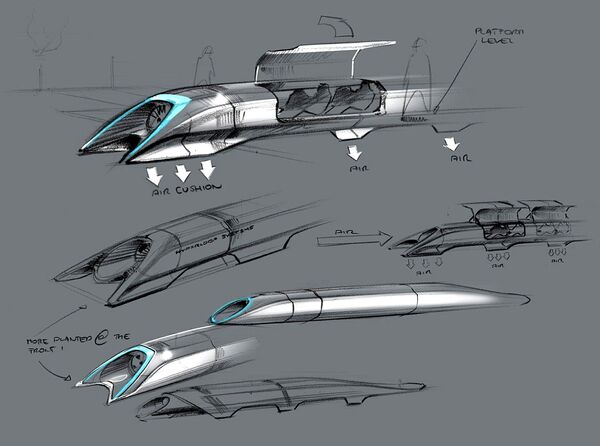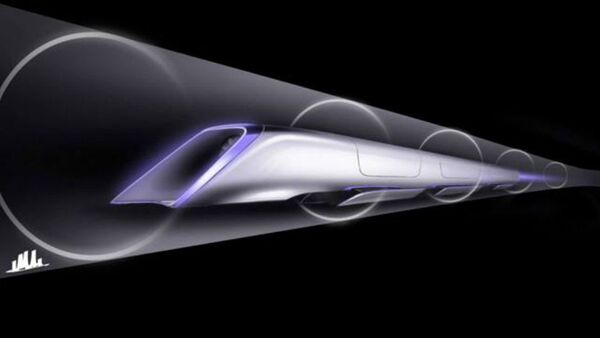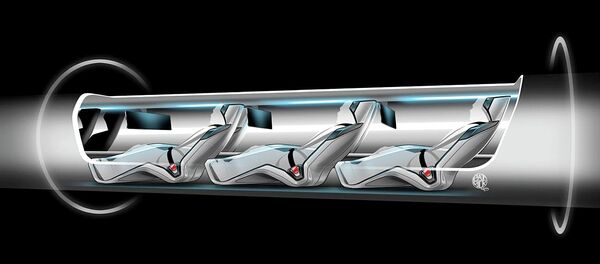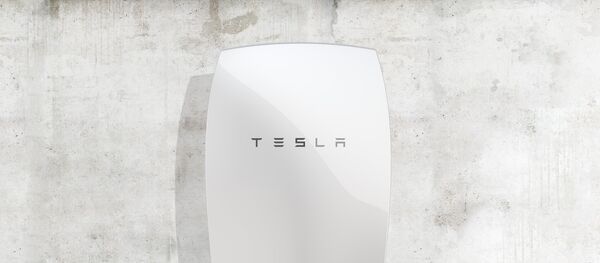Elon Musk first mentioned the high-speed transportation system in the summer of 2012, when he said he was working on a "fifth mode of transportation." The Hyperloop, as Musk envisioned it, would consist of various “pods” that can carry people or cargo travelling through a partially pressurized tube at a speed of up to 760 MPH.
Musk’s offhanded comment on the new technology was received so well by the public, that in August 2013, he and some SpaceX engineers drew up a detailed white paper conceptualizing the technology and how it would shuttle passengers from Los Angeles to San Francisco in just 35 minutes.
"Short of figuring out real teleportation, which would of course be awesome," Musk wrote, "the only option for super-fast travel is to build a tube over or under ground that contains a special environment. This is where it gets tricky."
The Hyperloop, according to Musk, would be ideal for travel between cities that are less than 900 miles apart, and would be cheaper and faster than air travel, and much more convenient than trains.

The white paper was left open source, allowing other engineers and companies to develop the Hyperloop plan and designs. Two companies, Hyperloop Technologies and Hyperloop Transportation Technologies, have already started working on the project, with the latter laying out plans to build a five mile test track of the transport tube in California.
However, aside from laying out conceptual designs and making them publicly available, Musk and his company SpaceX have been uninvolved in furthering the project.
"We are excited that a handful of private companies have chosen to pursue this effort," SpaceX said in a statement. "Neither SpaceX nor Elon Musk is affiliated with any Hyperloop companies. While we are not developing a commercial Hyperloop ourselves, we are interested in helping to accelerate development of a functional Hyperloop prototype."
And in the interest of developing a prototype, SpaceX announced on Monday plans to build a Hyperloop test track outside its headquarters in Hawthorne, California, marking Musk’s first concrete involvement in making his fantastical project a reality.
Keeping in line with the company’s plans to spur innovation, SpaceX announced that the track will be built for an open sourced contest, inviting anyone, from commercial ventures to university students, to participate.
"In order to accelerate the development of a functional prototype to encourage student innovation, SpaceX is moving forward with a competition to design and build a half-scale Hyperloop pod."
Contestants will be tasked with designing passenger pods and presenting them to a team of experts in January 2016. The best designs will then be built at half-scale. In June 2016, the pod prototypes will be pitted against each other at SpaceX’s Hyperloop test-track, expected to be at least a mile long with a diameter of four to five feet.
The idea for the contest first came about when Musk told attendees at the Texas Transportation Forum in January that he was thinking of building a test track.
"People could compete, say, who could make the pod go the fastest, and maybe compete on other dimensions," he suggested at the time.
"I think that could be pretty fun."




